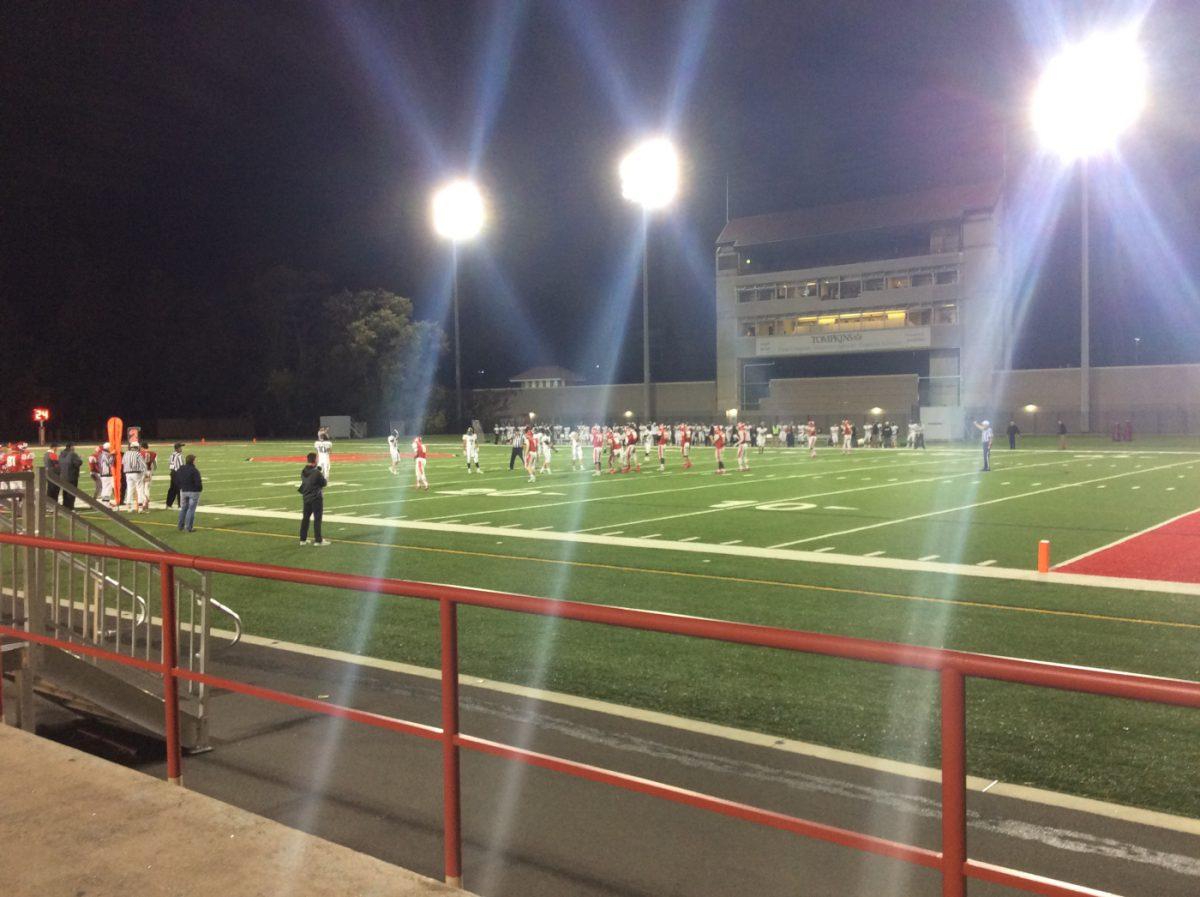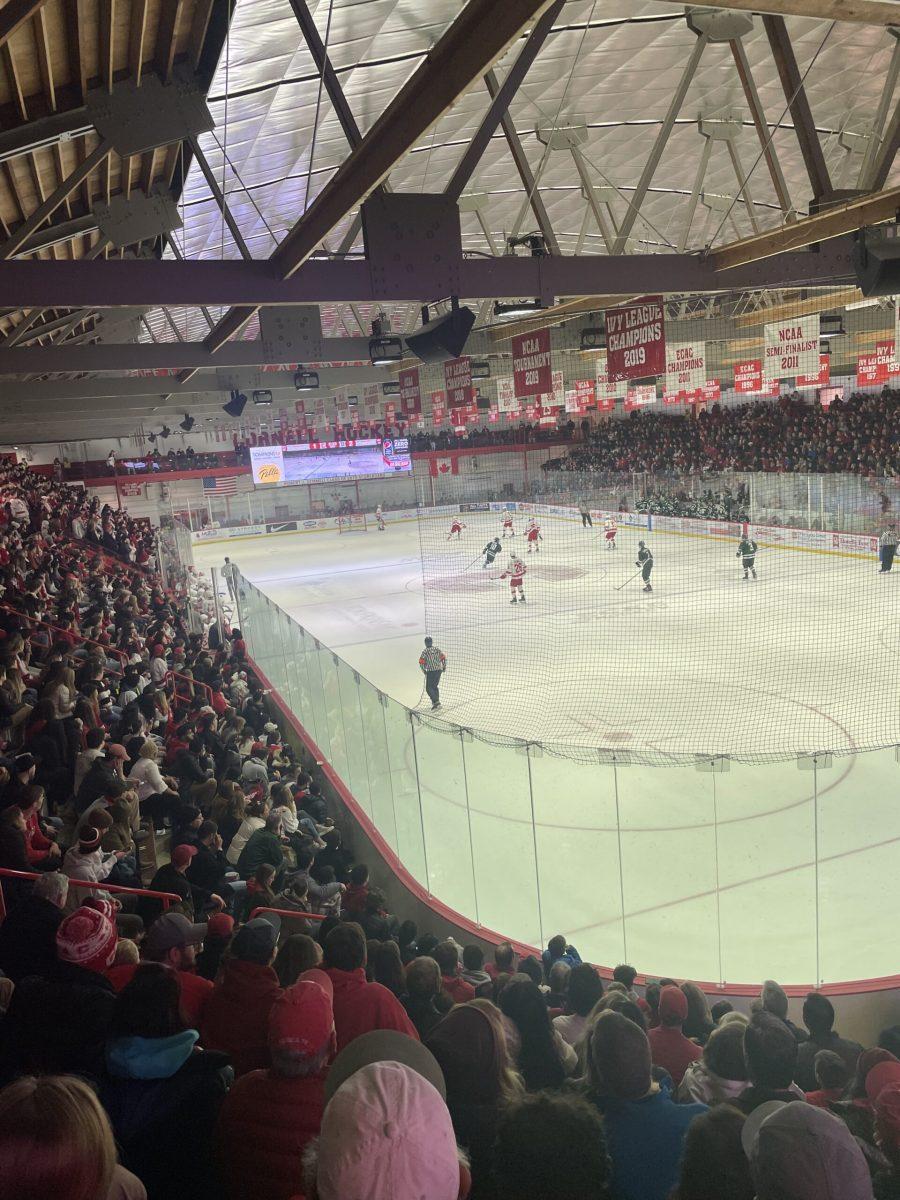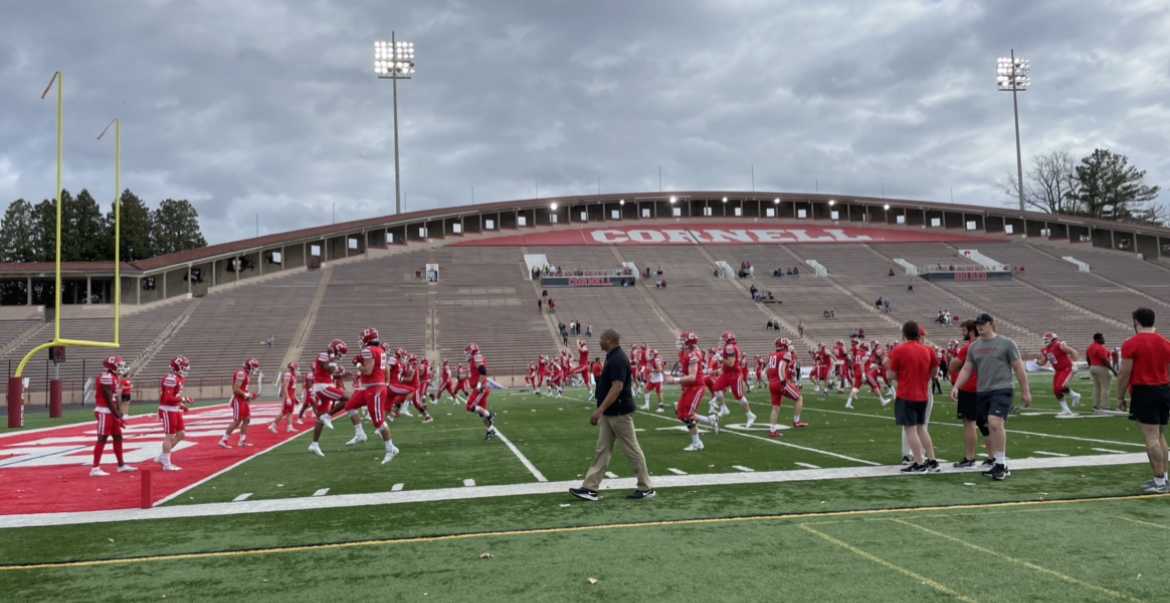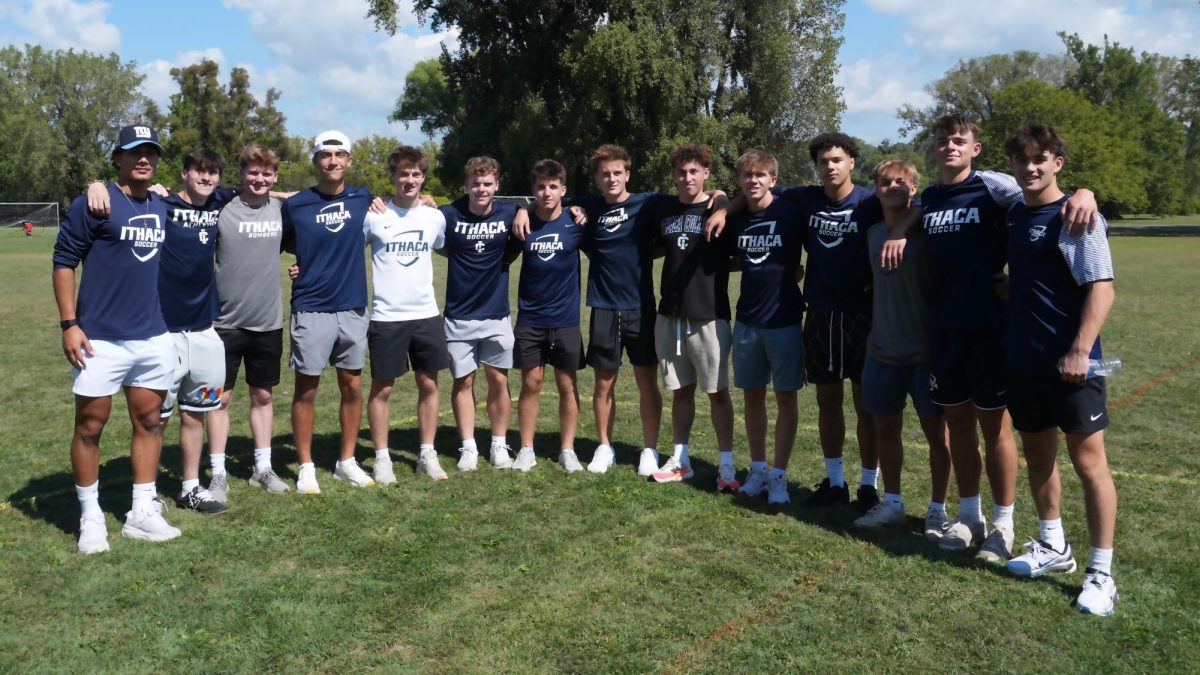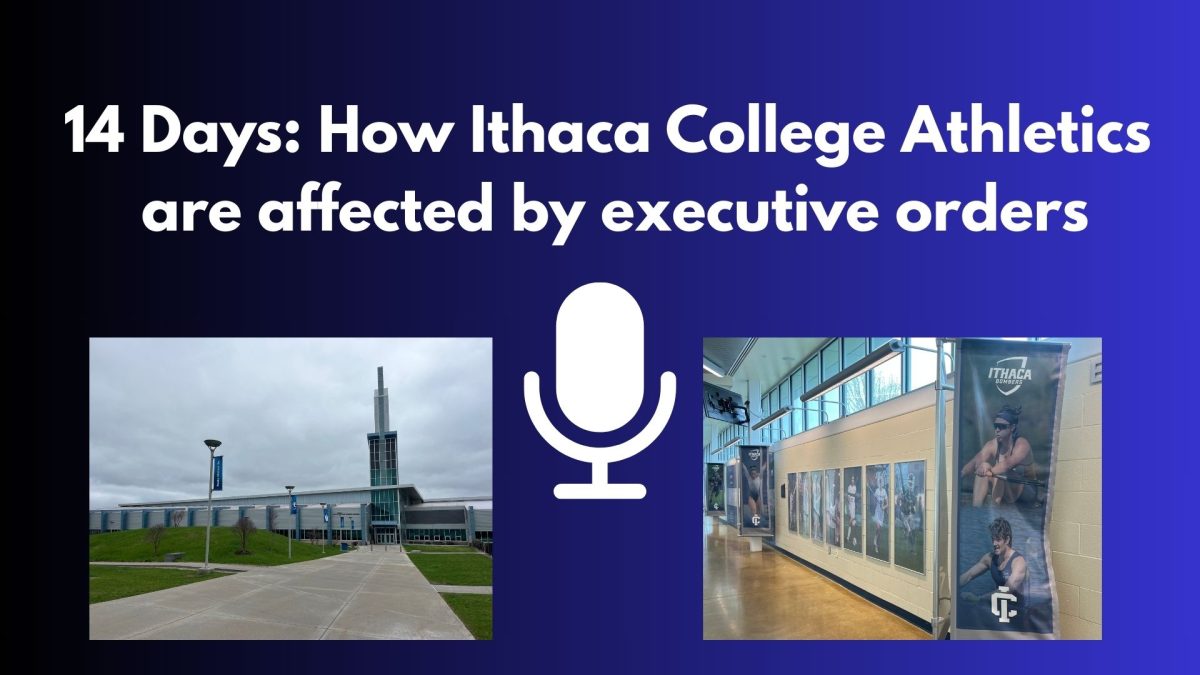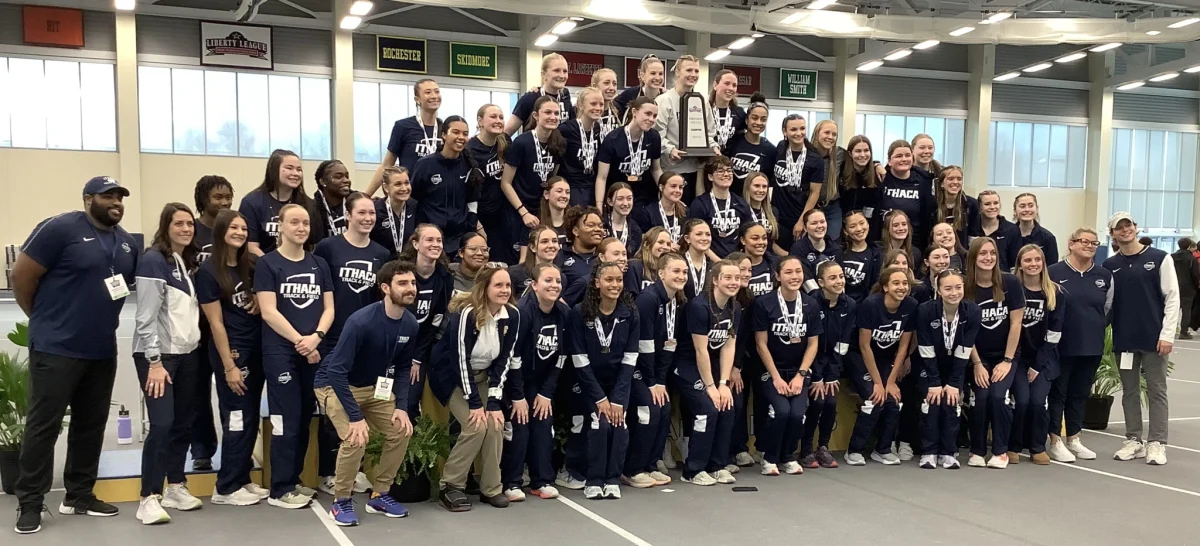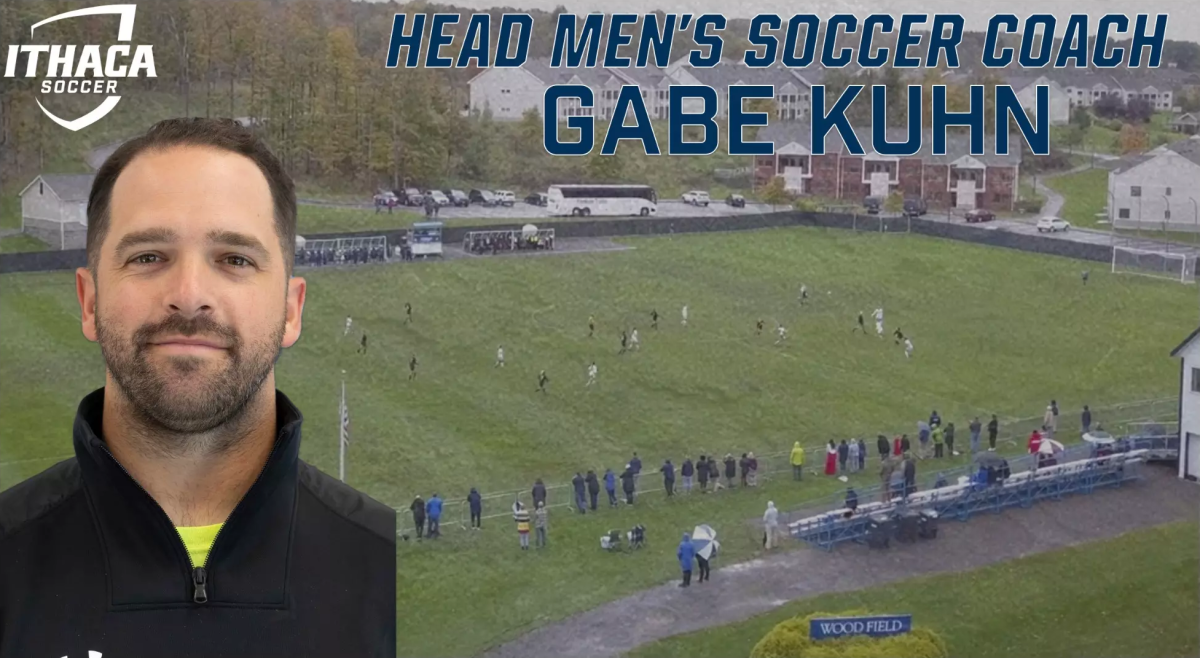It’s October 27, 2017, and the sun has already set on the campus of Cornell University. Since it’s a Friday night, many students are preparing to go out for the night and get “Halloweekend” started as soon as possible. At Schoellkopf Field, however, others are preparing to play their biggest game of the season against a perennial power.
When you think of the top college football programs in the nation, names like Alabama, Georgia or Clemson may come to mind. In this instance, the Cornell Big Red are preparing for the boys from West Point, the Army Black Knights. That’s because this isn’t traditional football. This is a game called sprint football.

What Is Sprint Football?
“It’s basically just football but for the average-sized college student,” says quarterback Connor Ostrander, a junior at Cornell.
While you’ll see some of the largest humans your eyes will ever bear witness to playing “regular” college football, sprint football players must weigh 178 pounds or less. This means the games are focused more on technique, speed and agility rather than raw power and brute force.
A 2017 graduate of Cornell University and a four-year member of the sprint football team, Caleb Minsky says there are a few categories of sprint players.
“Kids like [me] who were smaller in high school but not for sprint. But there’s also people like my brother who were monsters in high school and cut a lot of weight,” he says, referencing his older brother Josh, a 2011 Cornell graduate. “There’s also guys who played big time high school ball, but weren’t big enough to play at Cornell. Then there are also kids who have never played football before and want to try it out.”
Minsky also says the weight limit used to be 172 pounds when he played, but the limit was upped to 178 pounds before this season.

How Is It Different?
Given the max weight of 178 pounds and reliance on speed rather than bruising your way up the field, the style of play differs from traditional football.
“You really only see spread offenses,” says Ostrander. “Even down at the goal line everyone is out of the shotgun.”

Army proved to be a shining example of this. With the ball on the Cornell 1-yard line, the Black Knights went with two straight runs up the middle, punching it in on the second. Usually you’ll see teams go with a “heavy set”, bringing in extra linemen and a fullback in order to bully their way into the end zone. Army, however, maintained their spread formation, with just five linemen and only the quarterback and one running back in the backfield.

“It can actually open some things up, especially down in the red zone,” Ostrander says. “Things aren’t as crowded at the line since the receivers stay spread and they can’t just pack the box, so you can actually have an easier time finding those holes.”
Only nine schools in the entire country play sprint football: Cornell, Army, Navy, Penn, Post, Chestnut Hill, Franklin Pierce, Mansfield and Caldwell.
Despite being loyal to his former team, Minsky admits Army and Navy generally field the best squads, saying every year those two schools can see hundreds trying out for a spot on the roster. And on this night in October, Army proves this notion, trouncing Cornell 55-0 to move to 7-0 on the season, while the Big Red drop to 3-3.

